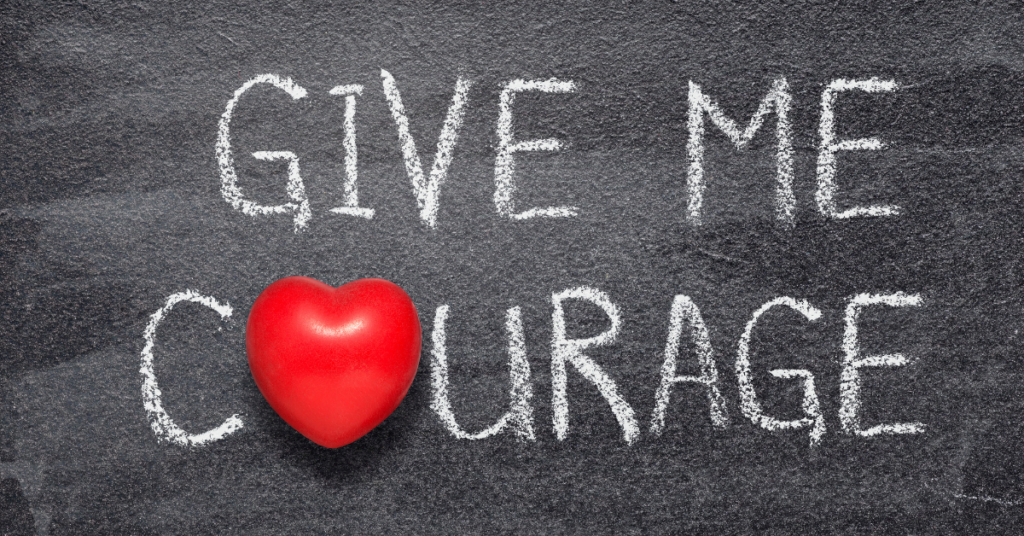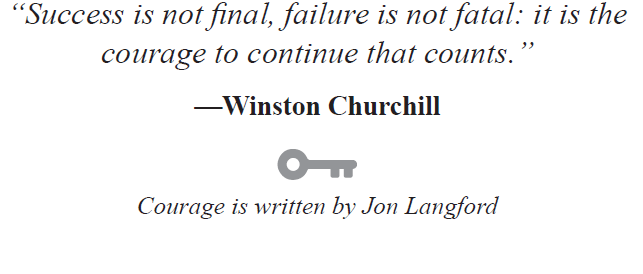Courage



One of my favorite stories to share is one about Walt Disney’s vision for creating Disneyland.
Born out of a desire to spend more time with his children and have more control over the entertainment he was creating, his idea was met with resistance. Both Walt’s wife, Lillian, and his own brother, Roy, didn’t think the amusement industry was one Walt should consider, given the public perception of carnivals and traveling fairs.
Walt’s persistence was grounded in his family values. Every Saturday, he would take his daughters to local parks for a little fun. Unfortunately, there wasn’t much for Walt to do there because everything was sized for children, not adults. It was in this situation that Walt later said, “I just thought there should be a place where parents and their children could have fun together.”
It was in that same decade that Walt attempted to bring a multi-sensory experience to audiences through the release of Fantasia in 1940. Unfortunately, due to the costs associated with bringing this type of experience to theaters and the unwillingness of theater owners to take the financial risks in doing so, the film did not perform well. Walt knew that if he was to take his studio to new heights, he was going to have to have more control over his product.
Walt saw an opportunity to merge his values and his vision together in an ambitious endeavor called Disneyland. With local opposition, skeptical friends and family, loans from multiple banks, and everything he owned on the line, Disneyland opened in 1955 at a cost of $17 million. Although not everything was perfect on opening day, one thing surpassed everyone’s expectations: the number of people who showed up.
Having anticipated fifteen thousand guests, more than twenty-eight thou- sand visited the park on opening day. Even with all the opening-week struggles, more than one million guests visited Disneyland. Walt’s courage ultimately paid off.
Often, when we think of courage, we think about the heroic moments or stories we have seen on the big screen, read in a good book, or observed in someone else. Rarely do we consider our own stories or moments to be examples of courage. Whether we live in uncertainty about how we might respond had we been in similar situations or diminish the value of our own simple moments of courage, we must consider the core motivation for courage.
The etymology of the word “courage” begins with the Latin word cor, which means “heart.” In other words, long before we used the word “courage,” we used the word cor, challenging ourselves to “have heart.” It is from the heart that we find courage. Courage is born in the heart. We now know what the ancients knew long ago: that courage comes from the heart.
From the heart, we move to the mind. The modern definition of “courage” emphasizes both “mental and moral strength,” helping us define two things at the core of our being:
- What we value
- What we want to achieve in life
We now realize that at the core of courage is the heart to believe in some- thing we want to achieve and what we value most. What we want to achieve and what we value are often determined by how far we are willing to go to pursue something and what we are willing to do to protect it.
I challenge you, over the course of this week, to compose two lists:
- A list of the things you value most in life
- A list of the things you want to achieve in life
Once the lists are complete, prioritize the things you want to achieve in life in one column, and then prioritize your values in the other column. Then associate every value you identified with the things you want to achieve in life by drawing lines from one column to the other. Once complete, you will have a personal value system established from the heart that will help drive you toward your goals in life with courage.
Now that you have created these lists, each day this week, read them out loud, one by one.
Next, look for opportunities throughout the day to make decisions based on your values and goals. At the end of the day, examine what you did to help you get closer to each.
